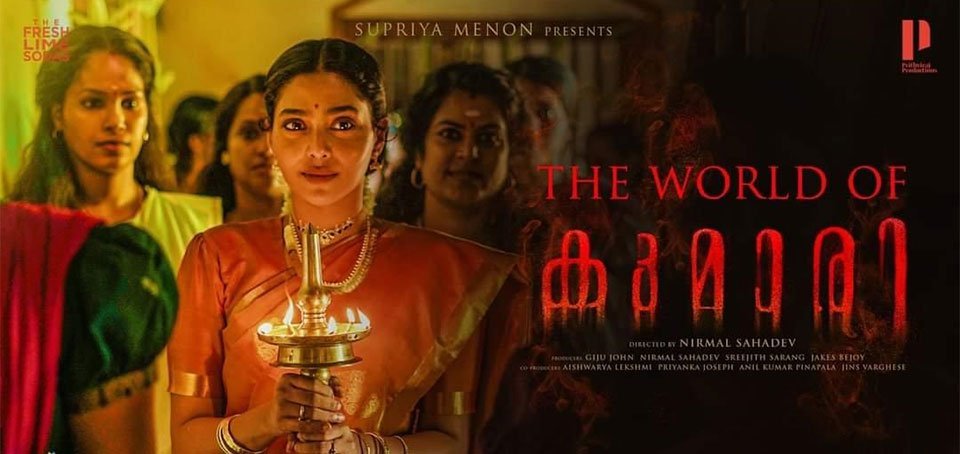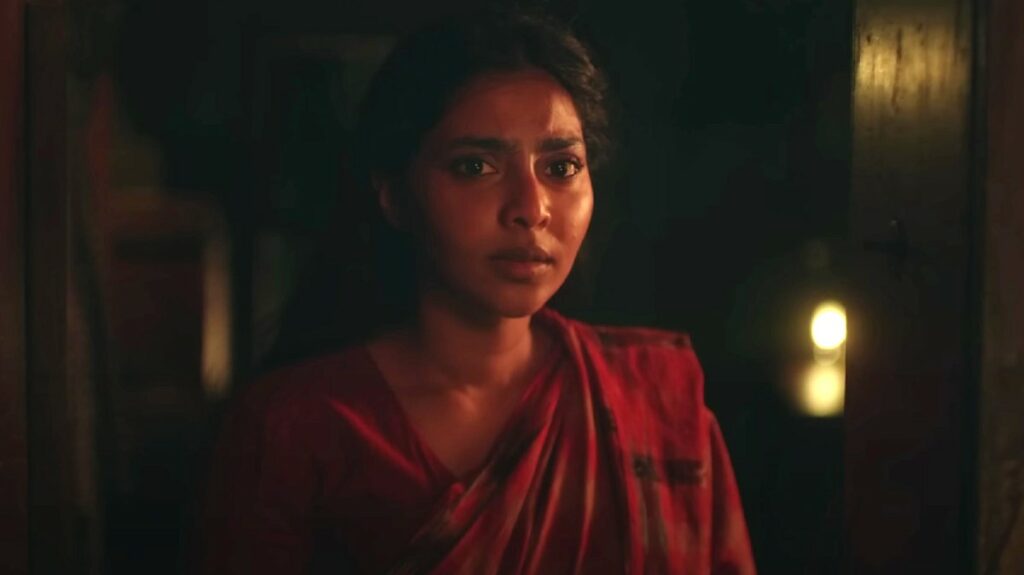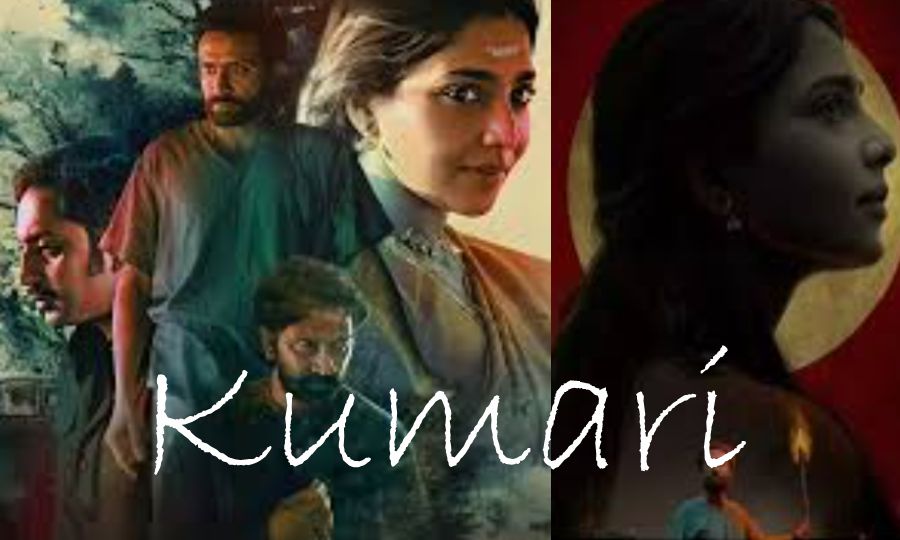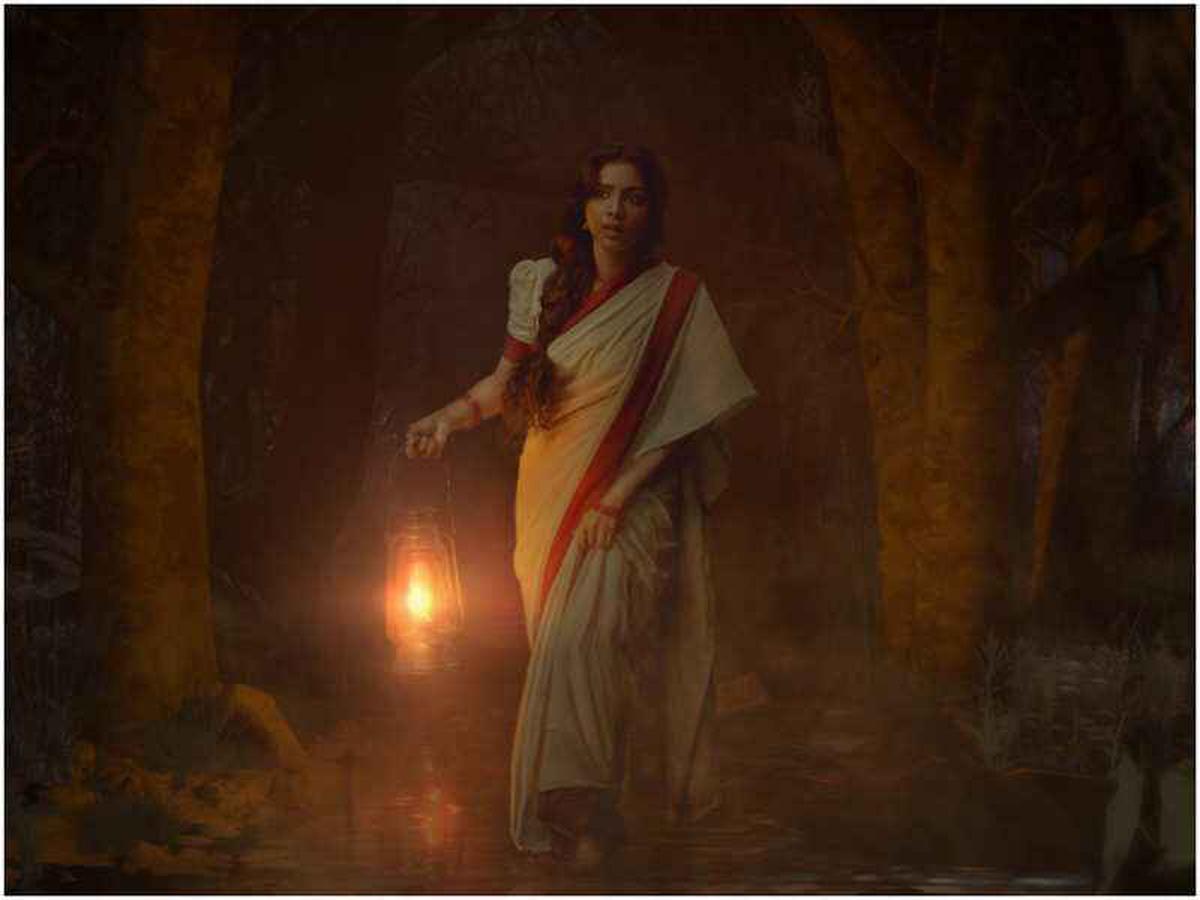Kumari, a cinematic masterpiece by a visionary filmmaker is an effortless qualm of captivating social and political realities with strong artistic vision as its support.
The film delves deep into themes of identity, resilience, and the unyielding spirit of the human soul. The theme of the film also explores caste, class, mental health and gender over the course of 2 hours and 17 minutes of its screening. The story starts with the grandmother’s voice narrating a story to the granddaughter. The story is about a young girl who is married to Kanjirangattu Tharavadu. It begins with a focus on a young goddess who desires to visit Earth, which she does and loves so much that she decides to stay back.
She falls in love with a human and they have children together. The twist in the story begins when the children turn out to be demigods and a mishap starts happening within the family.
Bedtime stories are profound, gazing and often a carried ritual of a Malayali family irrespective of addressing the social beliefs associated with such rituals. Kumari, the lead in the movie, is one of the characters in a tale told by a grandmother to her granddaughter.
The film provides a nuanced portrayal of the complexities of rural life
In the sleepy village of Kumari, nestled next to the enigmatic Illimulam forest, lies the prominent Kanjirangattu family. This family, steeped in tradition and myths, is shrouded in mystery as it grapples with its own dark secrets. Adding to the intrigue is the Chathan, peculiar beings born with extraordinary features, who are believed to be the children of a goddess who abandoned heaven to live among mortals.
Kumari, an orphan raised by her uncles and brother, embarks on a new chapter in her life when she marries Dhruvan, the youngest son of the Kanjirangattu Tharavadu. However, as she settles into her newfound family, she gradually becomes aware of the pervasive influence of blind faith and sorcery that engulfs the villagers.
Kumari, an orphan raised by her uncles and brother, embarks on a new chapter in her life when she marries Dhruvan, the youngest son of the Kanjirangattu Tharavadu. However, as she settles into her newfound family, she gradually becomes aware of the pervasive influence of blind faith and sorcery that engulfs the villagers.

Amidst her own personal growth, Kumari begins to question the unquestioning devotion and reliance on supernatural forces prevalent in her community. She finds herself at odds with the entangled web of superstitions and rituals that dictate the villagers’ lives, yearning for a more rational and enlightened approach.
The juxtaposition of Kumari’s journey into the Kanjirangattu family and her realisation of the community’s collective reliance on faith and sorcery forms the crux of the film. It explores the conflict between tradition and progress, highlighting the need for critical thinking and individual agency in the face of ingrained beliefs.
As Kumari grapples with her own identity and the weight of ancestral customs, the film provides a nuanced portrayal of the complexities of rural life and the resilience of its inhabitants. It invites viewers to contemplate the blurred boundaries between folklore, spirituality, and reality, prompting a deeper examination of the human inclination towards the mystical and the power of collective beliefs.
The craving for power and the politics of dominance in Kumari
Kumari takes audiences on a journey through a sleepy village where the Kanjirangattu family and the mysterious Chathan and the tribal community reside. It paints a vivid picture of a community driven by faith and sorcery, while Kumari herself navigates the clash between tradition and personal growth. The film encourages introspection on the influence of superstition and the importance of critical thinking in shaping our lives and society.

The craving for power and caste-based discrimination is also blindly appeased and followed by the family. The monopoly of owning land and deep-rooted feudalism within dominating caste groups was clearly evident in the film when the father talks about owning most of the hard-earned money of the villagers.
This resonates with the old age Brahminical domination in rural spaces where lands are being captured and most of the villagers are forced to live at the helm of charitable offerings by the village ruler.
The film took a harder look at the mental health and well-being of people who experience generational trauma, however, though well-tried, the film vocally fails to address the concern after raising it at any point later on.
The film’s strength lies in its powerful storytelling and exceptional performances. The protagonist, portrayed by Aishwarya Lakshmi, draws viewers into her world with her raw emotions and compelling portrayal. Through her character’s struggles and triumphs, the film tackles societal pressures, self-discovery, and the complexity of personal identity. The conflicting marital hegemony was clearly seen when the central character had her own confusing take on her partner’s past.
Visual ornaments in the film and the rural tribal communities
The cinematography in Kumari is truly breathtaking. Every frame is meticulously composed, with a keen eye for capturing both the beauty and harsh realities of the protagonist’s environment. Wide-angle shots of the place and the scenic beauty of the rural landscape were successfully captured in the entire film. The visuals are enhanced by a remarkable musical score that elevates the emotional impact of the narrative, immersing the audience in the protagonist’s journey.

What sets Kumari apart is its ability to provoke deep introspection and ignite conversations on cultural norms and gender roles. The film fearlessly confronts societal constructs and challenges the status quo, shedding light on the significance of individual freedom and personal choices.
While the film is undeniably impactful, there are moments when the pacing feels slightly uneven. Some scenes could have been trimmed to maintain a more consistent rhythm. Nonetheless, this minor flaw doesn’t detract significantly from the film’s overall brilliance. The traditional take on the film beautifully captures the usual household chores of a Malayali family at the same time interestingly evokes the interest of the audience with the social divides of society with respect to caste, class, race and gender.
Kumari is a testament to the power of independent cinema, showcasing the ability of a small-budget production to deliver a profound and resonant experience. It will leave viewers reflecting on their own lives, the expectations placed upon them, and the courage it takes to embrace one’s true self.
Kumari is a testament to the power of independent cinema, showcasing the ability of a small-budget production to deliver a profound and resonant experience. It will leave viewers reflecting on their own lives, the expectations placed upon them, and the courage it takes to embrace one’s true self.

Most of the elements in the film can be left for the audience to capture, understand, resonate and also the ability to reflect upon the notion of different social constructs impacting individual lives.
The film mesmerises with its subtle take on identities
In Kumari, the effort to show the interplay of identities, caste, patriarchy and also the livelihood of tribal communities are major takeaway elements. The film finds its own depth with its social-cultural and political commentary with respect to complexities and challenges faced by individuals within these intersecting systems.
Caste, a deeply entrenched social hierarchy in many parts of India, is subtly addressed in Kumari. The protagonist’s struggle with her identity and societal expectations reflects the rigid caste-based norms prevalent in her community. The film highlights the pressure to conform and the consequences of defying caste boundaries, ultimately questioning the impact of these divisions on individual freedom and self-expression.
Caste, a deeply entrenched social hierarchy in many parts of India, is subtly addressed in Kumari. The protagonist’s struggle with her identity and societal expectations reflects the rigid caste-based norms prevalent in her community. The film highlights the pressure to conform and the consequences of defying caste boundaries, ultimately questioning the impact of these divisions on individual freedom and self-expression. Kumari’s character reflects thoughts around the strong gender roles which are often coerced into the lives of the dominant gender in the familial tree in the name of culture.
Despite this, the character is also shown to build resistance towards the imposed roles through the agility of contradicting her partner and his opinion while similarly acknowledging the mental health issues faced by him.
Delves into the experience of identity and a grappling take on social positions
Gender plays a central role in Kumari, as the protagonist navigates the patriarchal structures that dictate the roles and expectations imposed on women in her community. The film portrays the protagonist’s journey of self-discovery and defiance against gender stereotypes, challenging the traditional notions of femininity and the constraints imposed by a male-dominated society. It presents a powerful critique of gender-based discrimination and emphasises the importance of empowering women to assert their agency.
The intersectionality of caste, gender, and patriarchal notions in Kumari allows for a nuanced exploration of the complex dynamics that shape individuals’ lives. It prompts viewers to critically examine how these systems intersect and perpetuate social inequalities. The film encourages a reevaluation of these ingrained societal norms and calls for a more inclusive and egalitarian society that celebrates diversity and upholds individual rights.
Moreover, Kumari delves into the experiences of tribal communities, shedding light on their marginalised position within society. The film highlights the challenges faced by these communities, such as limited access to resources, discrimination, and the preservation of their cultural identity in the face of modernisation. By centring the narrative on a tribal protagonist, the film offers a platform to amplify their voices and shed light on their unique struggles and resilience.
The intersectionality of caste, gender, and patriarchal notions in Kumari allows for a nuanced exploration of the complex dynamics that shape individuals’ lives. It prompts viewers to critically examine how these systems intersect and perpetuate social inequalities. The film encourages a reevaluation of these ingrained societal norms and calls for a more inclusive and egalitarian society that celebrates diversity and upholds individual rights.

Kumari skillfully weaves together the themes of caste, gender, patriarchal notions, and tribal communities, offering a compelling portrayal of the challenges faced by individuals within these intersecting systems. The film serves as a powerful critique of societal structures that restrict individual freedom and a call to challenge and dismantle these oppressive norms. It invites viewers to engage in introspection and actively work towards a more equitable and inclusive society.
The film sums up at the end when Kumari is shown to have outgrown her character as poignant, composed and also a sound individual taking on life with sincerity and power at the same time. The end relives with her having said about the importance of doing things right as the family has a history of doing things wrong. This also touches upon the importance of a long debatable topic around the leadership abilities of individuals coming from different ranges of marginality. Marginality isn’t only about bringing divisive and inclusive policies but also stressing the idea of pluralism far.
Overall, Kumari is a must-watch film that stimulates the mind, tugs at the heartstrings, and leaves a lasting impression. It is an artistic triumph that reminds us of the strength and resilience within each individual, and the importance of embracing our true selves.
About the author(s)
Ritwik is a northeastern Bahujan who has been a journalist for 2 years. He has also been a UN fellow for the year 2021-22. He has worked on several papers like writing about reportage in broadcast media on women impacted by floods in the northeast. He is currently working on queer representation in the regional press of Assam. Most of the work focused on gender, sexuality, intersectionality, climate change, marginalised and vulnerable communities and data journalism.
He has been a contributing writer at Youth ki Awaaz, Feminism in India and Swaddle for the last 4 years.






